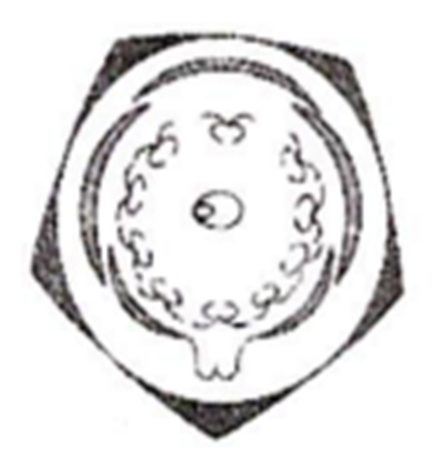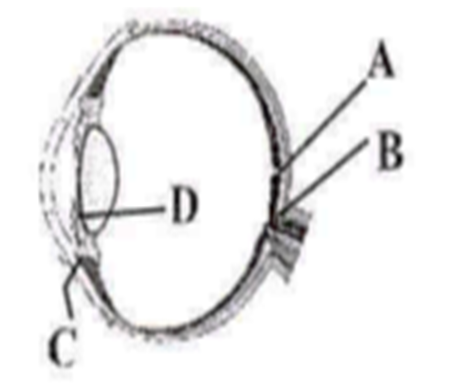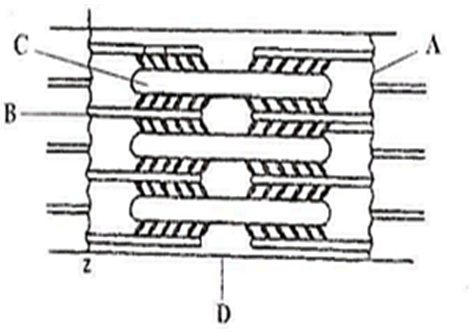 Multiple Choice Questions
Multiple Choice QuestionsWhich of the following microbes is correctly paired with its function?
Aspergillus niger- Production of lactic acid
Trichoderma polysporum- Lowers blood cholesterol
Saccharomyces cerevisiae- Production of citric acid
Methanogenic bacteria- Gobar gas formation
Match Column - I with Column - II and select the correct option from the codes given below
| Column I | Column II |
| A. Chlorophyta | (i) Equisetum |
| B. Lycopsida | (ii) Chara |
| C. Phaeophyta | (iii) Selaginella |
| D. Sphenopsida | (iv) Ectocarpus |
A - (ii), B - (iii), C - (iv), D - (i)
A - (iv), B - (i), C - (ii), D - (iii)
A - (ii), B - (iii), C - (i), D - (iv)
A - (iv), B - (i), C - (iii), D - (ii)
Which of the following gastric secretions is correctly matched with its source?
Pepsin - Chief cells
Chymotrypsin - Parietal cells
HCl - Goblet cells
Mucus - Oxyntic cells
A.
Pepsin - Chief cells
Parietal cells (or oxyntic cells) secrete hydrochloric acid (HCl) and Castle's intrinsic factor.
Chief cells (or peptic cells) secrete gastric digestive enzymes as proenzymes such as pepsinogen and prorennin.
HCl helps in converting pepsinogen to pepsin.
Goblet cells secrete mucus which helps to neutralise acid in stomach and protects stomach wall against HCl action.
Which of the following is true for excretion in humans?
Glucose and amino acids are reabsorbed in PCT by simple diffusion.
OCT is impermeable to water.
Or an average, 25-30 gm of urea is excreted out per day.
Maximum reabsorption occurs in the loop of Henle.
Which of the following is the correct floral formula for the floral diagram given below?

or (5) ()
%
Which of the following is true for the function disease in family A and B? of labelled parts in the diagram below?

A - Blind spot - Image is formed here
B - Fovea - No visual activity is present
C - Cornea - Helps to hold lens in place
D - Iris - Visible coloured portion of eye
Which of the following is true for the labelled parts in the figure below?

A - Z- line - located at centre of I - band
B - Thin filament - occurs in A- band only
C - Thick filament - confined to I- band
D - H- zone - located at centre of M - Line
Which of the following is correctly matched without exception in regard to plant classification?
Family - Poaceae - ae
Division - Pteridophyta - phyta
Class - Bryopsida - sida
Genus - Solanum - um
In the given table, some organisms are classified into categories. However, there is one exception. Select the option with correctly mentioned exceptional organism.
| Organisms | Category | Exception |
| Penicillium, Aspergillus, Mucor | Fungi | Mucor |
| Organisms | Category | Fungi |
| Cacti, Venus flytrap | Plants | Cacti |
| Organisms | Category | Exception |
| Ascaris, Nereis, Wuchereria | Aschelminthes | Nereis |
| Organisms | Category | Exception |
| Scorpion, Prawn, Anopheles | Arthropoda | Prawn |
